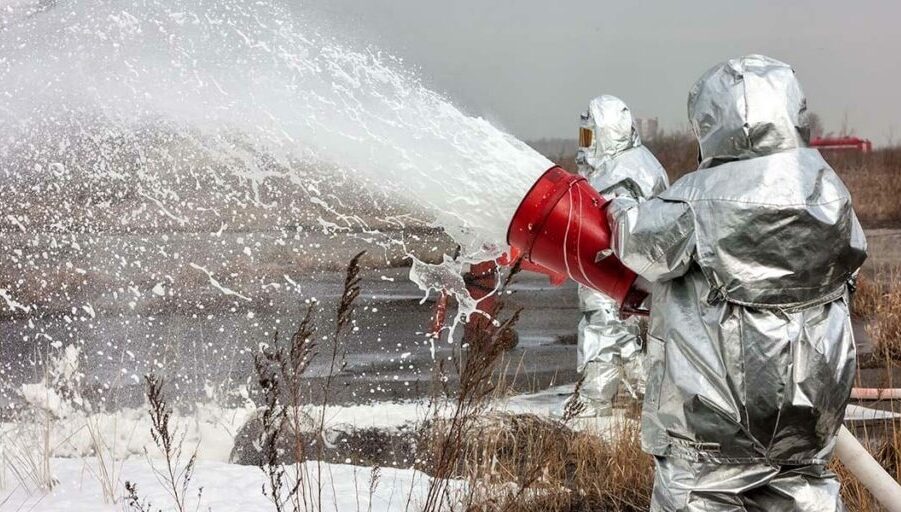
John Hult/South Dakota Searchlight
The state of South Dakota will spend up to $250,000 to clear PFAS chemicals from local areas in the coming year.
Per- and polyfluoroalkyl substances, known as PFAS or “forever chemicals,” break down at an exceedingly slow rate in the natural environment. They’re found in products like nonstick cookware, water-resistant items like umbrellas or rain jackets, and cleaning products, among other items.
Concerns about their prevalence in the environment and their impacts on human health have grown steadily in recent years, as they’ve been discovered in drinking water, fish and food packaging.
PFAS are also found in a kind of firefighting foam that’s fallen out of favor, but fire departments around the U.S., including in South Dakota, still have some and need to dispose of it.
The South Dakota Board of Water and Natural Resources awarded a $250,000 Solid Waste Management grant to the state Department of Agriculture and Natural Resources (DANR) last month to help communities collect and dispose of some PFAS sources. The citizen-led water resources board evaluates projects and signs off on funding through the solid waste program.
The grant will allow fire departments with PFAS foam, or schools whose science labs may still have chemicals, to summon the department’s contractor to collect and safely dispose of them at an out-of-state location. The state will also reach out directly to agencies, and has begun to contact fire departments, airports, and other public entities by phone to find out if they have PFAS for disposal.
The money comes from the Inspection, Compliance, and Remediation program, funded by a mix of fuel tank inspection fees and the sale of lottery tickets. Typically, cleanup grants through the program cover 80% of cleanup costs, with the entity requesting cleanup expected to cover the rest.
The South Dakota Legislature approved Senate Bill 33 this year to let DANR put $250,000 of program funds toward PFAS cleanups with no local match.
Andy Bruels with the DANR told the water resources board in March that a previous PFAS cleanup a few years ago cleaned up “a fair amount of material.” The contractor hauled it out of state for disposal, as typical landfills can’t adequately prevent the chemicals from continued seepage into the environment.
The legislation also allowed for the grants to be used in waste tire cleanup, but Bruels said the primary focus will be PFAS and that it’s unlikely much will be left for that secondary purpose.
